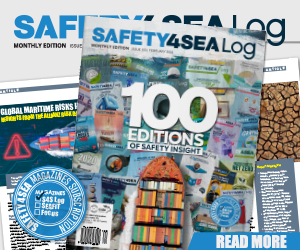2022 marks a significant year for workplace wellbeing with the World Health Organization officially recognizing burnout as an occupational phenomenon. A shipping career, either onboard or in an office, can be demanding, with heavy workload and unexpected situations. How sure are you that you are taking care of yourself?
Physical and emotional exhaustion maybe a familiar sense for most working professionals, but it was not until May 2019, when WHO included burnout in its 11th Revision of the International Classification of Diseases (ICD-11) as an occupational phenomenon, and not until January 2022 that this officially came into force. According to WHO, burnout is a syndrome “resulting from chronic workplace stress that has not been successfully managed” and is characterized by three dimensions:
- feelings of energy depletion or exhaustion;
- increased mental distance from one’s job, or feelings of negativism or cynicism related to one’s job; and
- reduced professional efficacy.
It is noted that, while WHO does not classify burnout as a medical condition, it recognizes that it can lead to serious physical and mental health concerns. And while stress is a key component of most people’s everyday working routine, latest data of 2022 by the American Psychological Association show that the added stressors associated with the pandemic are heightening everyone’s risk of burnout.
Watch out: The main warning signs
The effects of a burnout, especially when ignored and ignored, can range from mental health issues to social isolation. In many cases, you may present several of the following symptoms but fail to realize that these are correlated:
Exhaustion: The main symptom of burnout is feeling physical, mental and emotional exhaustion, which can be translated into routine changes like different sleep patterns or loss of appetite.
Prone to illness: Mental and physical health are always associated. As such, feeling burned out can lower your immune system, making you more prone to colds and sickness.
Isolation: When feeling overwhelmed from work requirements, spending time alone away from your people may seem as a more and more attractive plan.
However, the most severe issue relating to burnout is that, in many cases, people are aware that they have reached the point of burnout but are unaware of their problems and try to continue their lives as if these did not exist.
Key burnout statistics
Burnout affects millennial retention, with 84% of millennials say they have experienced burnout at their current job, compared to 77% of all respondents, according to 2018 data by Deloitte. Nearly half of millennials say they have left a job specifically because they felt burned out, compared to 42% of all respondents.
As of February 2021, reports of burnout increased during the COVID-19 pandemic among U.S. employees of all generations, according to Statista. While Millennials previously reported much higher burnout rates than other generations, in February 2021, Gen Z and Gen X reported similar rates.
Did you know?
- Women are more likely than men to suffer from burnout.
- The US and Canada had some of the highest levels of workplace stress, according to a 2020 Gallup study.
How can I prevent burnout?
Taking care of your mental health as part of your everyday routine is generally the most efficient way to minimize likelihood of a burnout:
- Eat well: A healthy diet is the A and Z to a sense of wellbeing. For instance, eating omega-3 fatty acids -found mostly in fish- can be a natural antidepressant.
- Get a quality sleep: Set an alarm at a regular time each day, avoid computer when you go to bed, and use your bed mainly for sleep.
- Exercise: Exercise can clear your thoughts and get into a better state of mind to deal with your problems.
- Take care of others: Reach out to any of your friends, relatives or colleagues who seem to be feeling down. Even the smallest act can count, whether it’s a smile, a thank you or a kind word.
- Ask for help: If you are recognizing yourself in any of the above signs, do not hesitate to ask for help. You may start with a check along with your own people, but experts are always there to help you. For example, recently, the Shipowners’ Club and ISWAN announced a new app for seafarers, which can be used offline to provide help around the clock. Remember, it is ok to not be ok.
The way forward for leadership
Research is increasingly showcasing burnout as a real problem. A Gallup study found that burned-out employees are 63% more likely to take a sick day, while they have 13% lower confidence in their performance and are half as likely to discuss how to approach performance goals with their manager. Such studies reveal how employees’ burnout is vastly linked to organizational performance.
As awareness on burnout is increasingly being established, it is up to employers to promote work-life balance and help employees “burn bright” instead of burning out. Wellbeing programs are a good start for organizations to focus on, but not enough, said Deloitte after a 2018 study, which found that 25% professionals never or rarely take all of their vacation days.
The top driver of burnout cited in the survey was lack of support or recognition from leadership, indicating the important role that leaders play in setting the tone
…Deloitte said.

































































